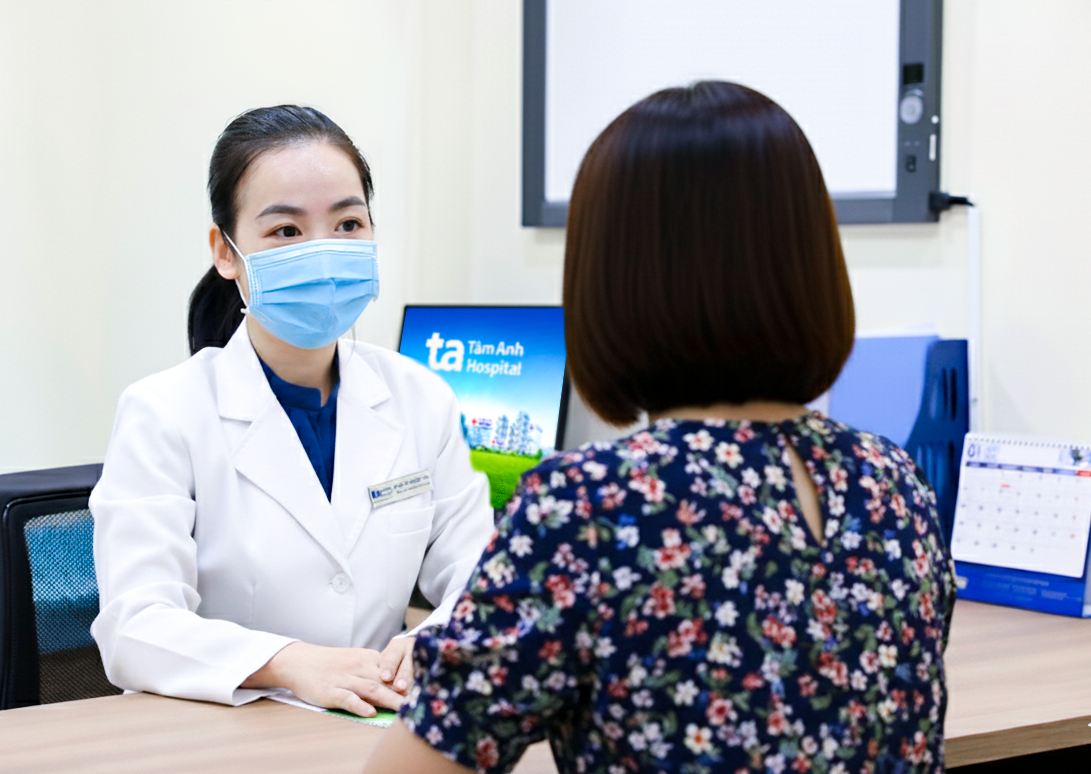Doctor Vo Thi Tuong Duy of the Dermatology and Cosmetic Dermatology Unit at Tam Anh General Clinic, District 7, diagnosed Dan with an infection spreading around the initial bite. Leeches secrete an anticoagulant while feeding, which prolongs bleeding and creates an entry point for bacteria, leading to infection.
Dan received antibiotics and anti-inflammatory medication, along with daily wound cleaning to prevent further bacterial growth. Her wound gradually dried, the swelling and redness subsided, and the pus stopped. Once her skin heals completely, Doctor Duy suggested laser treatment for any residual scarring.
 |
Doctor Duy consults with Dan about treatment options. Photo: Tam Anh General Hospital |
Doctor Duy consults with Dan about treatment options. Photo: Tam Anh General Hospital
Doctor Duy advises against pulling leeches off forcefully, as their mouthparts can remain embedded in the skin and cause inflammation. Instead, applying salt, lime, soap, or heat to the leech can encourage it to detach on its own. The bite should then be washed with soap, disinfected with rubbing alcohol, and covered with a clean bandage. Medical attention should be sought if bleeding persists, the wound becomes inflamed, or if fever or fatigue develop.
To prevent leech bites in wooded areas, Doctor Duy recommends wearing long clothing, securing cuffs and ankles tightly, and wearing closed shoes with high socks. Insect repellent or anti-leech cream can be applied to exposed skin. When resting, avoid sitting directly on damp ground or in thick undergrowth where leeches are commonly found.
Minh Huong
*The patient’s name has been changed.












